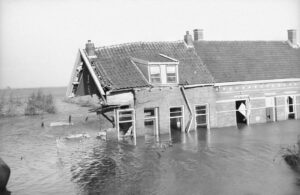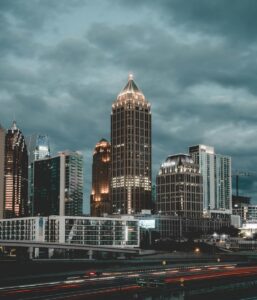Urban areas prone to more regular intense summer storms
New research by the American Geophysical Union suggests heavy, localised rainfall in warmer months is more likely to occur over cities than the countryside.
Larger metropolises also see more intense summer storms than smaller towns and built-up areas. While this backs up previous studies of rainfall in individual cities, it’s the first time an investigation has been conducted on multiple locations.
First published in the journal Earth’s Future, it’s not fully understood what is causing the phenomenon, although a number of factors are likely to be contributing. For example, the urban heat island effect, which keeps air temperatures warmer in cities than they are in the countryside.
As more of this heated air is drawn into an area, it is uplifted and then condenses, forming rainclouds. This mirrors a similar process through which storms form over mountains, producing rain at peaks, comparable to the towers that dominate many major city skylines across the world.
Milan, Berlin, London, Birmingham, Phoenix, Charlotte, Atlanta, and Indianapolis were all included in the study. Although varying in size and density, all are located in relatively flat regions and far from large bodies of water, geographical traits that would naturally influence the number of rainclouds and storms that form in an area.
‘Cities are expected to become more populated and increase in size in the coming decades,’ said Herminia Torelló-Sentelles, an atmospheric scientist at the University of Lausanne and the study’s lead author. ‘Being able to quantify urban flood risk is important for urban planning and when designing urban drainage systems.’
‘It’s not only intensity of rainfall that matters when you look at flood risk. It’s also how it’s distributed over space,’ they continued. ‘If you have a very large amount of rainfall falling over a very small area, that can collapse the drainage system in an urban area.’
In smaller cities, rainfall intensified by 0.9% to 3.4%, and for the largest cities the increase was between 5.2% and 11%. There were also ‘peak times’ for storms in some cities – hours of the day with a particularly high likelihood of heavy rain occurring, and rain was more spatially concentrated over all built-up areas by 15% compared with rural.
‘You can think of a city like an obstacle. When a storm is moving toward it, the air can be lifted over and around it,’ Torelló-Sentelles continued. ‘We need to study a wider variety of cities so that we can generalize findings and determine which city characteristics have the largest effects on cities’ rainfall-modifying potential. The mechanisms driving urban rainfall are quite complex, and we still need to research these processes more.’
More on climate change and net zero:
Image: Ben Dutton

















